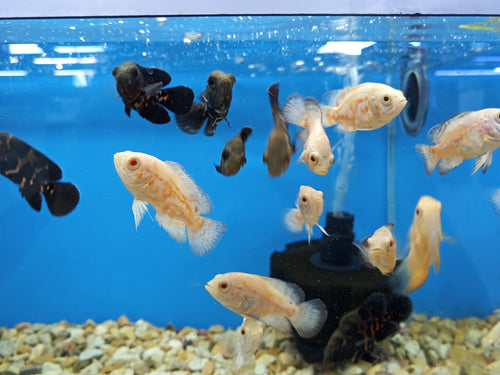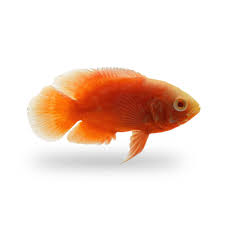Cichlid-Oscar 60-80mm
Cichlid-Oscar 60-80mm
check_circle Fast Shipping
check_circle Quality Products
check_circle Affordable Price
Reach out to us on ''available to order'' items via WhatsApp or email
Out of stock
Couldn't load pickup availability

Cichlid-Oscar 60-80mm
package_2
Product Description
Product Description
All our fish, shrimp and corals are bagged with fresh oxygen as well as a heat pack in winter.
When ordering livestock please select the box size and add it to your cart for accurate overnight (1-2 days) shipping costs. A small box can take 1-2 bags and a medium box 6 bags. One bag fits max 10 small (1-3cm) fish or max 2 medium (3-5cm) fish or max 1 large (>5cm) fish.
ONE SPECIES PER BAG. Eg: One bag of 10 neon tetra.
Oscar Cichlid (Astronotus ocellatus)
Description:
-
Appearance:
- Body: Large, robust cichlid with a deep, laterally compressed body. Known for its impressive size and striking appearance.
- Color: Typically varies with different color morphs, including classic red and black, tiger-stripe patterns, and albino variants. Commonly has a base color of dark brown or black with bright orange or red spots and markings.
- Size: Can grow up to 18-24 inches (45-60 cm) in length, with some individuals reaching up to 30 inches (76 cm) in very large tanks.
-
Behavior:
- Activity: Active and inquisitive. They are known for their intelligent behavior and interactive nature with their environment and keepers.
- Social Structure: Territorial and can be aggressive, especially as they mature. They may become more dominant or territorial during breeding or when kept with other fish.
Care Requirements:
-
Tank Size:
- Minimum of 75 gallons (284 liters); larger tanks (100+ gallons or 379 liters) are highly recommended due to their large size and active nature.
-
Water Parameters:
- Temperature: 74-82°F (23-28°C).
- pH: 6.0-8.0.
- Hardness: Soft to moderately hard water. They can tolerate a range of water conditions but prefer slightly acidic to neutral pH.
- Filtration: Strong filtration is essential to handle their high waste output. A high-capacity filter or multiple filters are recommended to maintain water quality and ensure adequate water movement.
-
Tank Setup:
- Substrate: Sand or large gravel is ideal. They may sift through the substrate, so a substrate that is easy to clean is preferable.
- Aquascaping: Provide ample swimming space and minimal décor to accommodate their size and activity level. Include some hiding spots or structures for them to explore and use for shelter.
- Lighting: Standard aquarium lighting is sufficient. They do not require special lighting but benefit from a well-lit environment that allows them to showcase their colors.
-
Diet:
- Primary Food: Omnivorous; feed a varied diet including high-quality cichlid pellets, flakes, and live or frozen foods such as worms, brine shrimp, and small fish.
- Supplemental Food: Offer occasional treats like blanched vegetables (e.g., zucchini, spinach) and high-protein foods to ensure a balanced diet.
-
Behavioral Considerations:
- Compatibility: Due to their size and territorial nature, they are best kept with other large, robust fish that can tolerate their aggression. Avoid small or peaceful species that may be bullied or become prey.
- Social Behavior: Can be kept singly or in pairs. They may become territorial and aggressive towards other Oscars or similar-sized fish, especially in smaller tanks.
-
Tank Maintenance:
- Water Changes: Perform regular water changes (20-30% weekly) to maintain water quality and manage waste.
- Cleaning: Regularly clean the tank and remove any uneaten food or waste. Ensure the filtration system is functioning properly and provides adequate water circulation.
-
Health Care:
- Observation: Monitor for signs of stress or illness, such as changes in behavior, loss of appetite, or visible symptoms like discoloration or fin damage.
- Treatment: Maintain optimal water conditions and consult an aquarium professional if any health issues arise. Address any signs of disease or stress promptly to ensure the health of your fish.














